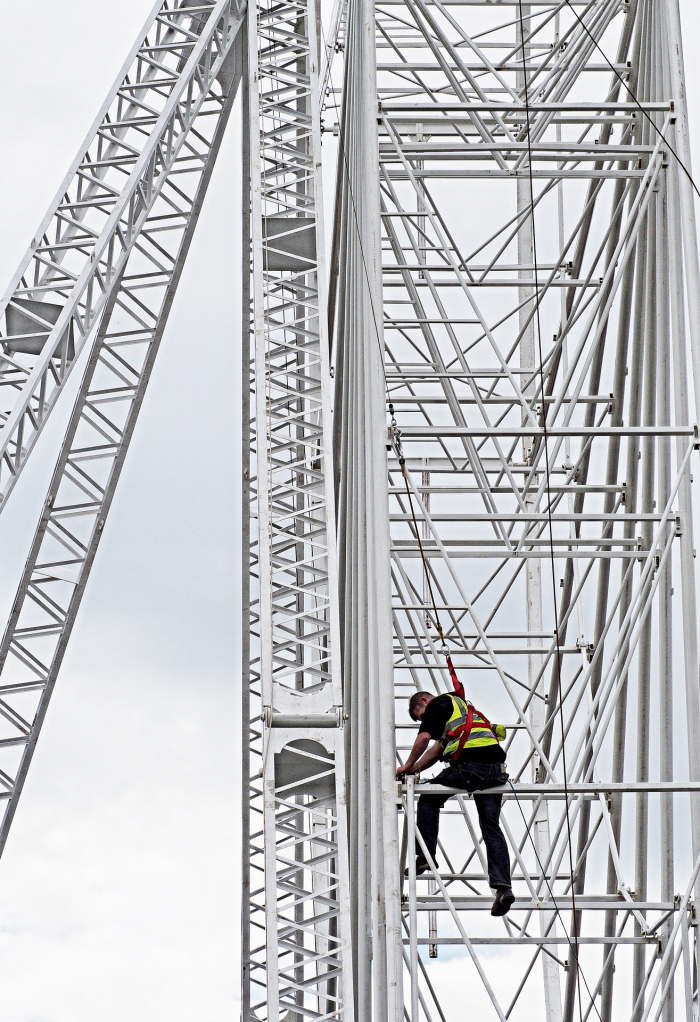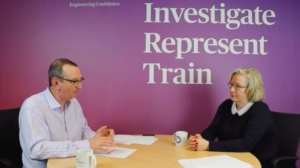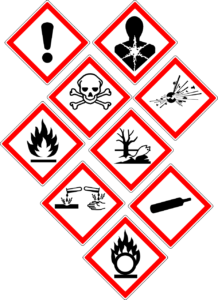Working at Height – The biggest cause of accidental death in the workplace. Easy to get wrong – but also, with a little understanding of the issues and control options, very easy to get right.
In this week’s toolbox talk for Directors, Finch Consulting’s Health and Safety specialist solicitor Sue Dearden, and former Principal HSE Inspector Melvin Sandell review:
- what is meant by working at height.
- the hierarchy of controls which ensure that the risks from working at height are reduced to the lowest practicable level.
- the steps Directors can take to reinforce safe work at height across their business.
If you have any questions relating to working at height or any other matter you may have noticed in our Director Briefing series, please do not hesitate to contact the following:
Video transcript:
Sue Dearden and Melvin Sandell on Working at Height
This is part of our series of talks and articles for Directors to help give an overview of health and safety requirements. Today the topic is working at height.
The Work at Height Regulations 2005 requires businesses to prevent death and injury caused by a fall from height which is still one of the biggest causes of death and serious injury in the workplace. This can be from a fall through something (like a fragile roof), or off something, or it can be a fall from ground level down a hole.
Compared with many regulations these requirements seem pretty straightforward but as a defence lawyer, time and time again falls from height are a significant part of prosecutions that I’m involved in defending. Why is that?
Work at height is pretty common in nearly all workplaces, even if it is just reaching a box of papers down from a shelf or swinging about a tree as part of a tree surgery so it’s no surprise that injuries from work at height are still the most likely way to get hurt or killed at work.
What is probably most sad though is that the controls for this are pretty well known, but there are so many misconceptions in the world that are still around about how this is controlled. There is still a belief that there is a minimum height of 2m below which you don’t have to control the risk. That went out when the Work at Height Regulations 2005 came in. “Short duration work” also doesn’t seem to count in people’s minds although its nearly always the short duration work that has the greatest number of accidents. And “ladders are banned” is another myth – whilst ladders certainly aren’t banned they should always be seen as the weapon of last resort for working at height. The truth of it is there is just so much work at height in workplaces and it is so easy to forget to control it and people hurt themselves by falling from very low distances.
Do you need a written risk assessment for work of short duration?
A written risk assessment will be required if you employ 5 or more people. Whether you do that before the event if you have time to plan the working at height, or you do it afterwards if you have done a dynamic assessment as you have gone through and done the work, matters not.
If you are a Director of a business and you’ve got a competent health and safety manager or a competent independent contractor to help you ensure health and safety is in place, what would you expect a director with the ultimate responsibility for health and safety to be looking out for in this context?
The Health and Safety Executive very helpfully create a hierarchy on their website, of controls for working at height. (www.hse.gov.uk/toolbox/height.htm)
Essentially this says that unless you have to do the work at height, don’t. Don’t send anybody up there to be in a position of risk – the example often given is cleaning windows from the floor using a pole with a hose attached to it.
If you have to do the work at height try and build or create a safe workplace, so put some scaffolding or safe walking surfaces up there.
If you can’t do that, then take your safe workplace with you – use a MEWP or some kind of a platform that will lift those who need access to get up there and to keep them safe.
If you can’t use one of those controls then use equipment that will stop you falling, so a line that will only allow you to get to the edge and no further, fixed to a secure point elsewhere. If that won’t work then use equipment that might let you fall but won’t let you fall very far, i.e. fall arrest equipment. And if you can’t do that, then reduce the distance or the consequences of the fall, so put airbags in or put nets below.
If you are the Director this isn’t a very difficult thing to assess. You can walk out into the yard or whatever and you can see what’s going on and this is the hierarchy the HSE or the Local Authority will judge you against for your planning, for your risk assessment – and to judge you on after any accident. Go and ask your H&S manager, “Why you are doing it this way?” and, “Why you can’t go further up the hierarchy?” because that’s exactly what the regulator will ask you, “Why did you choose to do it this way, why couldn’t you have done it the safer way”.
So, the hierarchy is to avoid the work at height if you can. If you can’t avoid it then you manage it by physically preventing a fall and if you can’t do that then use things that will limit the effect of a fall.
And if you’ve got a harness, for example, to catch somebody, is there anything more that you need to think about in terms of what to do if somebody does fall?
There’s been lots of discussion and scientific argument about how long people can dangle in harnesses for and the damage or harm they can be exposed to if dangling from their harness for a long time. You simply have to have a way to get them back. If they are dangling 30’ above the floor on a 5’ line and a harness you need to think about how you are going to get them back before you allow them to get into that situation. If you have a good health and safety manager, then as a Director they shouldn’t be bothered if you challenge them – being challenged about what they are doing is part of what ensures you are doing the right thing. And that challenge encourages the H&S Manager to be at their best all the time. It keeps them on their toes. If you have a good health and safety manager they should welcome that and not resent it.
Work at height is easy to get right and easy to get wrong. And as a director, you have a duty to pick up when people get things wrong, to correct them, and not to accept bad practice so a little bit of knowledge in this area is very useful.
Falling from height is the largest cause of accidental death in the workplace. The regulator has very little sympathy with employers and Directors that don’t control such an obvious risk.







